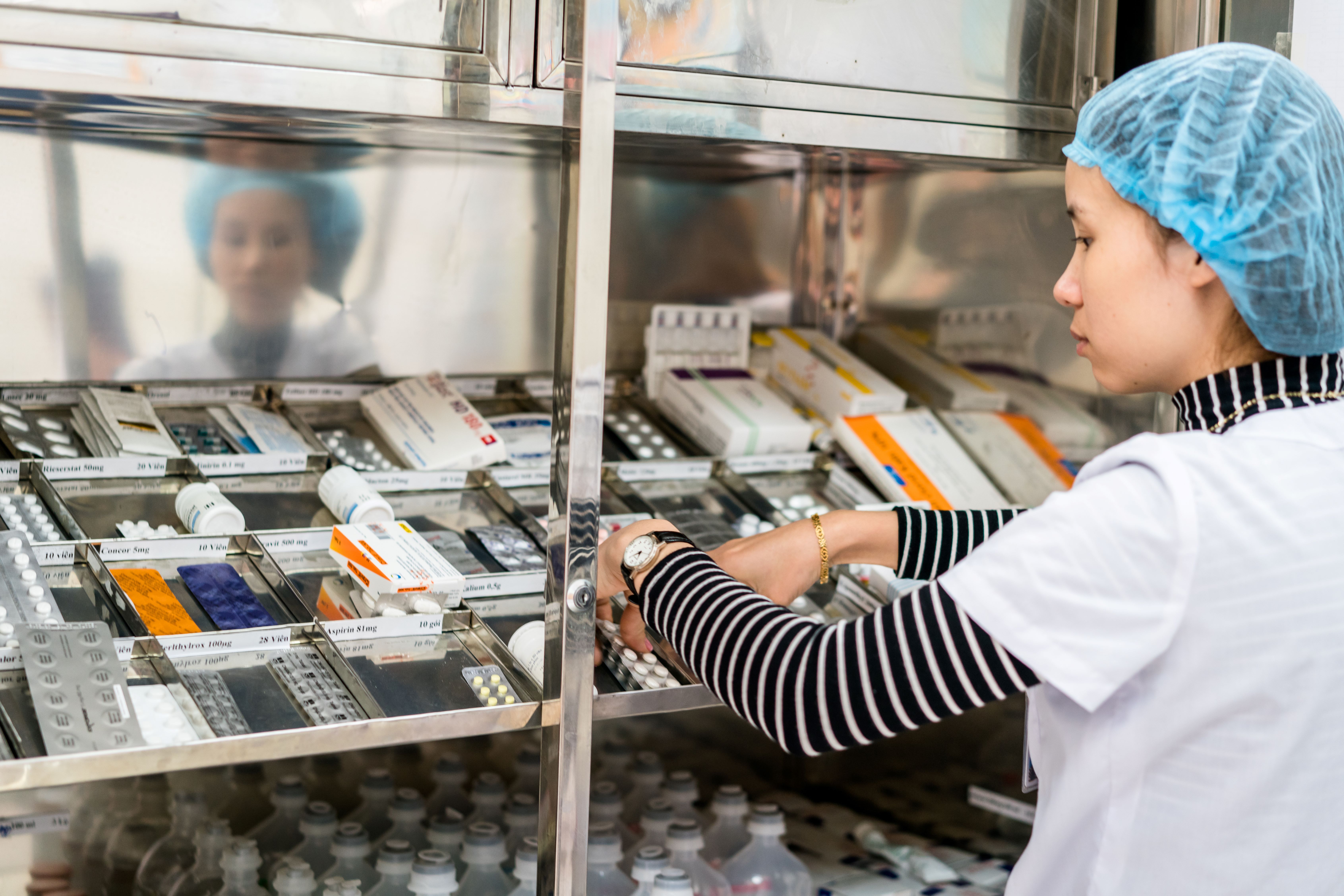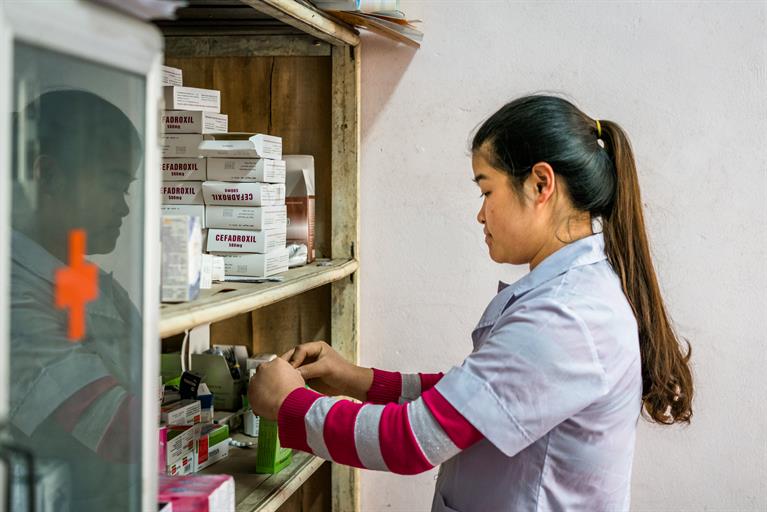
/access-to-medicines-and-health-products-adgo-(mha)/pharmacists-checking-medicines-stocks.tmb-768v.jpg?sfvrsn=3b0196be_1)
Access to medicines and health products
Universal health coverage can only be achieved when there is affordable access to safe, effective and quality medicines and health products.
Countries face a range of obstacles to achieving this, including rising prices for new medicines; shortages and stock outs of essential medicines, especially for noncommunicable diseases, and the growing problem of substandard and falsified medical products entering the global supply chain. Added to this, there are other challenges to ensuring that medicines are not only available, but are used appropriately. Antimicrobial resistance has become a worldwide problem largely due to overuse, and misuse of opioids has led to an addiction epidemic in some countries. Knowing where to tackle the problem is the first step. WHO works with Member States to identify what their priorities are on the road to achieving this universal access.
Areas of work
Regulation and Prequalification
Progress towards enhancing regulatory practices related to medical products around the world is supported by capacity building, promoting regulatory convergence and harmonization.

Universal Health Coverage Day
Annually 12 December
Highlights


School of INN

Medicine price information
News
All →Our work
All →
Improving access to Assistive Technology
Overview
Assistive technology enables and promotes inclusion and participation, especially of persons with disability, aging populations, and people with non-communicable diseases. The primary purpose of assistive products is to maintain or improve an individual’s functioning and independence, thereby promoting their well-being. WHO estimates that today 2.5 billion people need one or more assistive products. With a global ageing population and a rise in noncommunicable diseases, this number will rise beyond 3.5 billion by 2050, with many older people needing two or more products as they age. However, in some settings access to assistive products can be as low as 3%.
WHO coordinates the Global Cooperation on Assistive Technology (GATE) as a step towards realizing the Sustainable Development Goals, the Convention on the Rights of Persons with Disabilities, and implementing the resolution WHA71.8 on assistive technology. The GATE initiative has the goal to support countries in addressing challenges and improving access to assistive products within their context.
To achieve this, the GATE initiative is focusing on five interlinked areas (5P): people, policy, products, provision, and personnel.
Key facts
Publications
All →Improving access to assistive technology in United Republic of Tanzania (2022-2023): project report
The report summarizes a collaboration between the Ministry of Health of the United Republic of Tanzania, HelpAge Tanzania and the World Health Organization...
Enabling rapid access to essential assistive technology in Ukraine (2022-2023): project report
This report summarizes a collaboration between the Ministry of Health of Ukraine and the World Health Organization (WHO) in 2022 and 2023. The goal was...
Whether or not xenotransplantation should be done is beyond the scope of this paper. Therefore, this paper does not examine the important ethical issues...
This comprehensive document deals with the relevant WTO agreements and the way they may influence health and health policies. In undertaking this joint...


